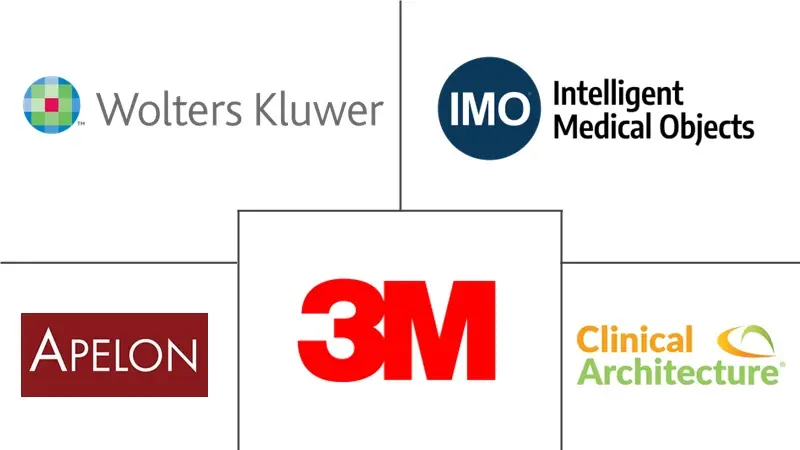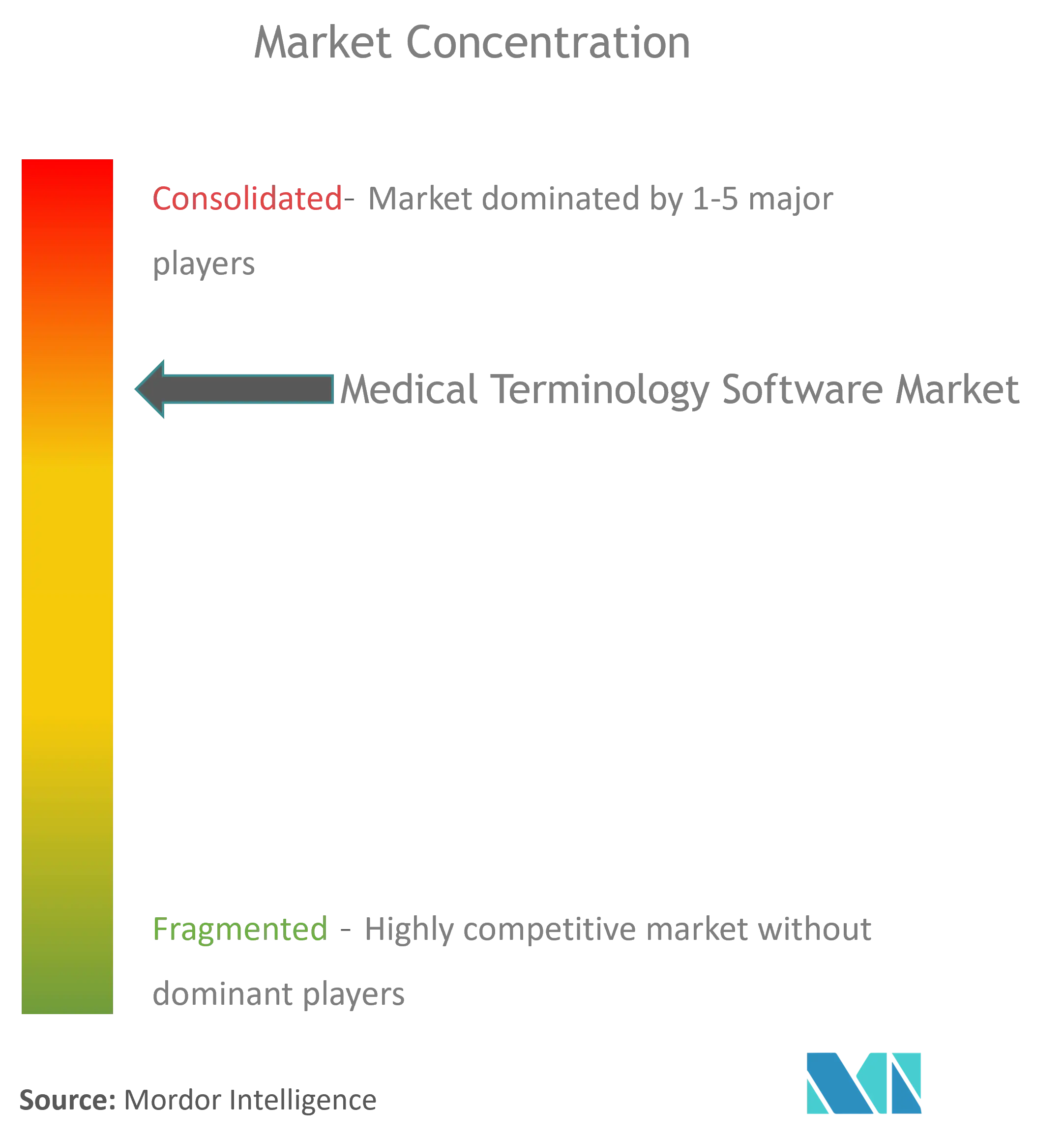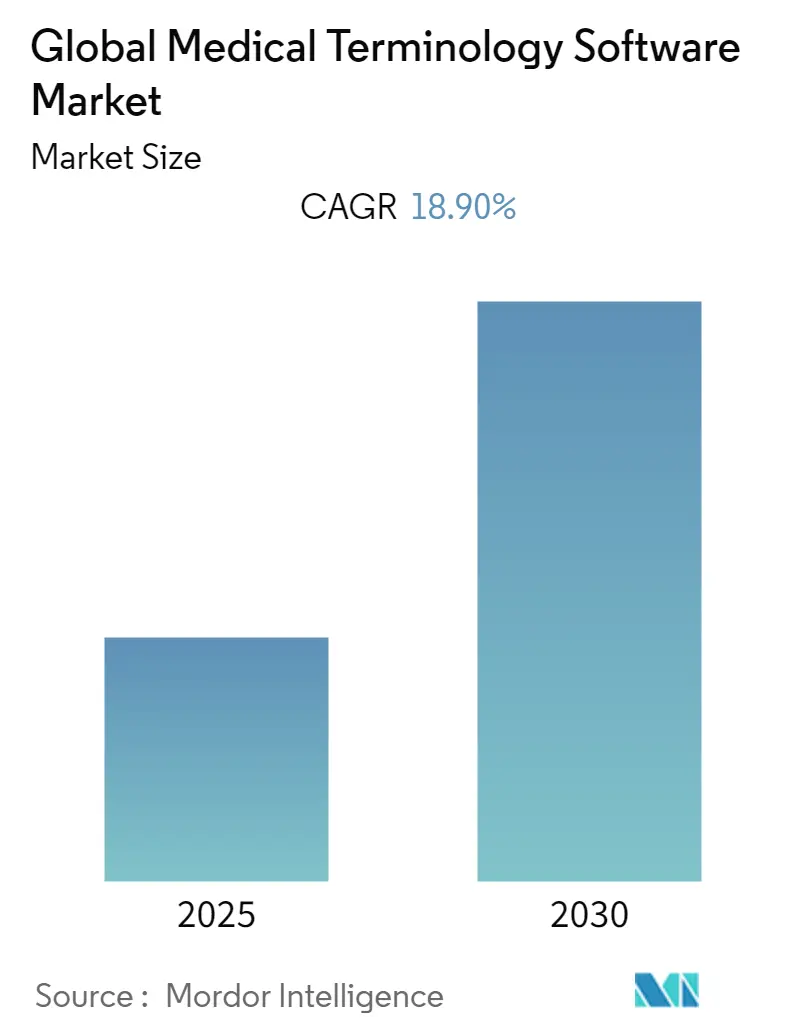
Medical Terminology Software Market Analysis
The Global Medical Terminology Software Market is expected to register a CAGR of 18.9% during the forecast period.
During this COVID-19 pandemic, hospitals are receiving a lot of patient-related data. Further treatment and care are provided to a patient using this information. Governments are making efforts to adopt cutting-edge healthcare software solutions in order to reduce the number of deaths by gathering and managing the data in a uniform way and using it to reduce medical errors during treatments. The market is expected to show better growth during the forecast period due to the increasing dependency of hospitals and the healthcare sector on digital platforms.
The terms of infrastructure and content of the healthcare ecosystems are currently very uneven. A healthcare organization may manage 50 or more different IT systems, each with its own architecture and information related to medical terminology. Companies struggle to use isolated clinical data because of these linguistic barriers, which has an impact on activities further down the line like data analytics. The problem is made considerably more difficult when a healthcare organization tries to share data with other medical partners. The crucial information in the situation is dispersed among multiple healthcare organizations and numerous distinct systems. Initiatives to enhance the integration, openness, and cooperation of the healthcare system are severely hampered by the absence of a common clinical language across a vast number of different systems. Thus, the need of clinical language through medical terminology software will drive the market.
Clinical data from both inside and outside the Electronic Health Record (EHR) system must be fully utilized by healthcare organizations to meet growing demand. Clean, trustworthy data are necessary to maintain the integrity of the information offered within the healthcare industry. On the other hand, hospitals have numerous difficulties in adjusting to changes in standards, coding, and the sharing of patient data between other healthcare providers. The current state of the healthcare ecosystem's electronic health record exchange does not function as intended, and using external data is inefficient. If techniques to effectively standardize, organize, clean, and manage clinical data are not applied, the amount of detail is lost through information sharing due to human or machine reading errors. According to data reported by AHA IT Supplement Survey for hospital EHR adoption; National Ambulatory Care Survey and National Electronic Health Record Surveys (NEHRS) on March 2022, about three-quarters of office-based physicians (72%) and nearly all non-federal acute care hospitals (96%) had adopted a certified EHR. EHR system users find it challenging to make sense of the prevailing disorganized data because of the existing congested data environment within EHRs, which raises concerns about data quality and reliability. Therefore, purchasing suitable healthcare terminology software is advised, boosting the segment growth.
Therefore, the factors mentioned above are attributed collectively to the studied market growth over the forecast period. However, reluctance to use terminology solutions over conventional practices are expected to hinder the market growth over the forecast period.
Medical Terminology Software Market Trends
Reimbursement is Expected to Witness High Growth Over the Forecast Period
Reimbursement is managed care payment by a 3rd party such as insurance company, to a hospital, physician, or other health care provider for services rendered to an insured/beneficiary. Reimbursement is found to hold the largest share which can be attributed to the growing patient volume and rising prescription drug costs are putting a strain on individuals. Additionally, stakeholders' interest in healthcare compensations is growing because of the ongoing increase in healthcare costs. As costs for medical examinations, treatments, and prescription drugs rise, so do healthcare expenditures. According to the U.S. Census Bureau report, published in 2020, all four cardiovascular risk factors are expected to increase from 2025 to 2060, with the largest percentage increase in diabetes (39.3% increase to 55 million persons), followed by dyslipidemia (27.6% increase to 126 million persons), hypertension (25.1% increase to 162 million persons) and obesity (18.3% increase to 126 million persons). According to Centers for Disease Control and Prevention (CDC) in 2020, about 697,000 people in the United States died from heart disease out of which coronary heart disease is the most common type of heart disease, killing 382,820 people and about 805,000 people in the United States have a heart attack every year. Interest among stakeholders in healthcare compensation and reimbursement will grow as the prevalence of chronic diseases and the cost of treatment rise therefore driving the growth.
Various efforts from both governmental and commercial entities have also played an important part in the segment's growth. For instance, the United States' Affordable Care Act is focused on giving low-income households access to health insurance. The law promotes innovative methods for delivering healthcare that lower costs and increase access to affordable health insurance for more people. Many small and medium-sized businesses (SMBs) may be tempted to manage employee health benefits on their own. Even though it might seem like the less expensive option, any mistakes that result in a plan being out of compliance can cost both the employees and the employers thousands of dollars. Therefore, purchasing suitable healthcare reimbursement software is advised, boosting the segment growth.
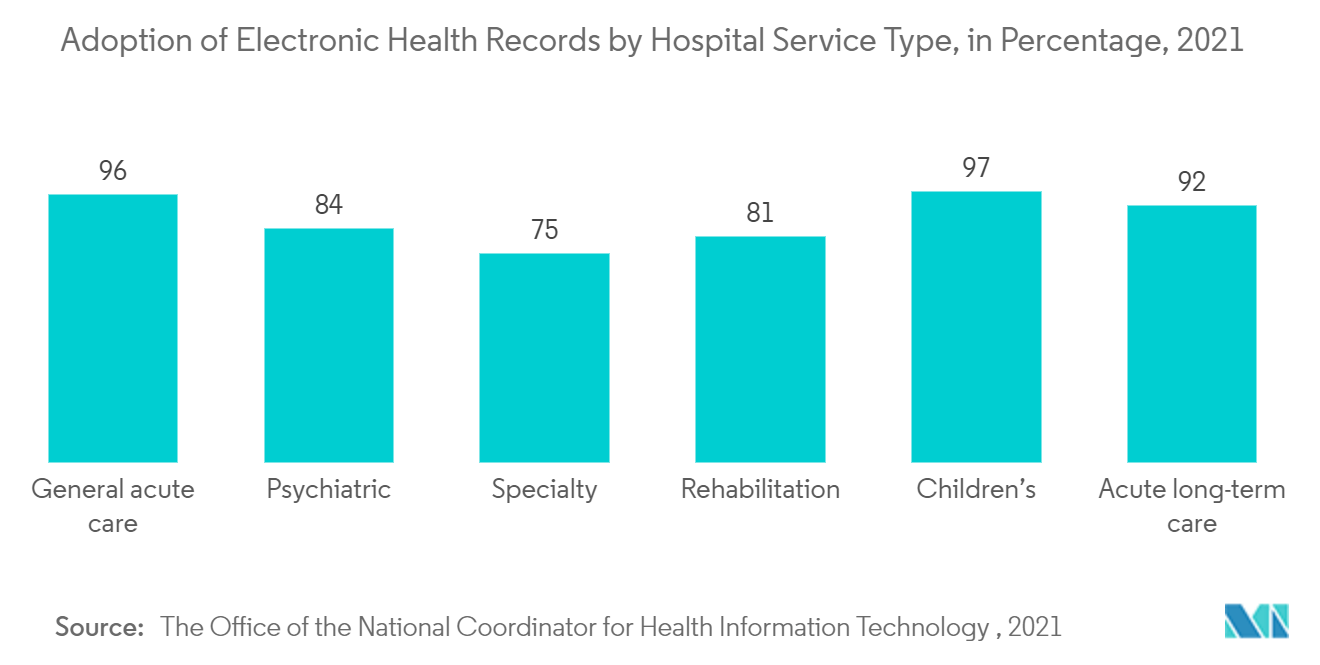
North America is Expected to Dominate the Medical Terminology Software Market
North America is expected to dominate the market owing to factors such the mass acceptance of diagnostic device connectivity and integration solutions to reduce healthcare spending, the growing proportion of chronic patients in the US, and rigorous rules and guidelines set by the regulatory government and non-government governing bodies such as the Federal Communications Commission and the Centres for Medicare and Medicaid Services.
Patient data is complicated, private, and occasionally unstructured. Prospects for improved patient care depend on integrating this data into the healthcare delivery system, which is a barrier that must be surmounted. Even though EHRs have been in use for more than ten years, the market has recently accelerated due to government initiatives in many countries to improve patient data privacy. For instance, the American Recovery and Reinvestment Act's adoption of the Health Information Technology for Economic and Clinical Health Act gave hospitals and doctors who showed considerable EHR utilization financial support. Thus, government initiative towards healthcare Information Technology will drive the growth of the regional market.
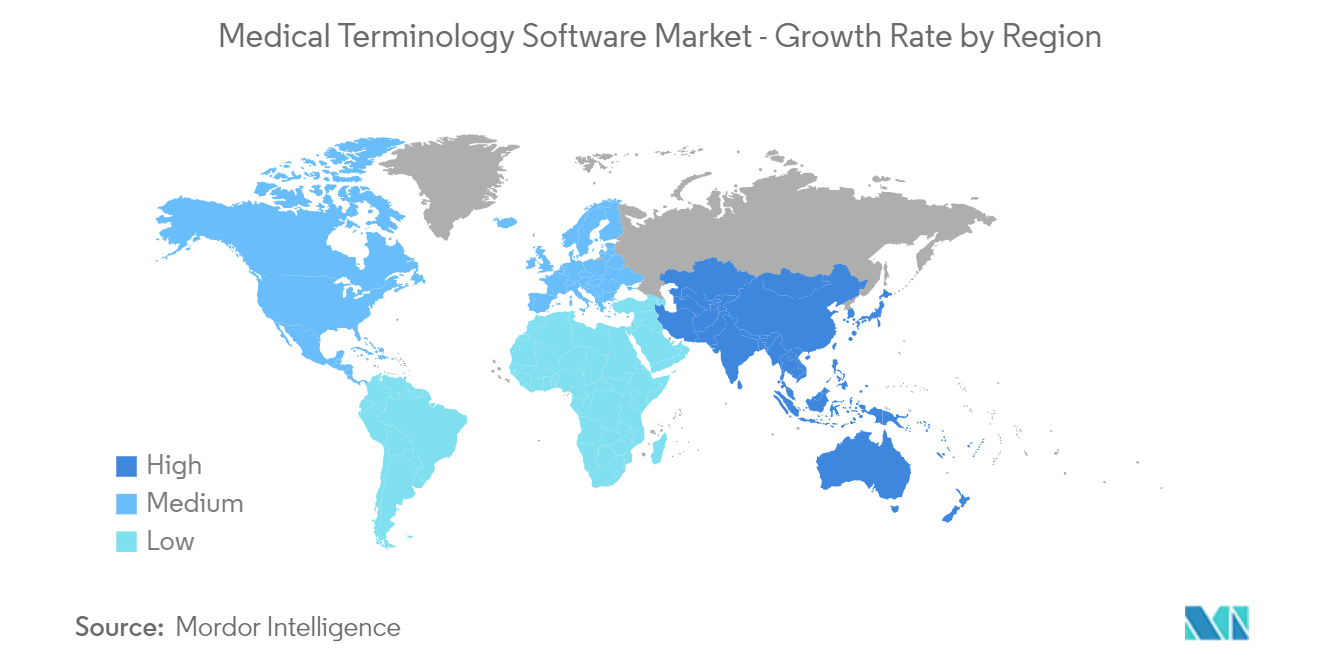
Medical Terminology Software Industry Overview
The medical terminology software market is fragmented in nature due to the presence of several companies operating globally as well as regionally. The competitive landscape includes an analysis of a few international as well as local companies which hold the market shares and are well known include Wolters Kluwer N.V., 3M Company, Intelligent Medical Objects, Inc., Apelon, Inc., Clinical Architecture, LLC, CareCom Ltd., BiTAC, B2i Healthcare, BT Clinical Computing, HiveWorx, Medocomp Systems, Spellex Corporation, and West Coast Informatics LLC, among others.
Medical Terminology Software Market Leaders
-
Wolters Kluwer N.V.
-
3M Company
-
Intelligent Medical Objects, Inc.
-
Apelon, Inc.
-
Clinical Architecture, LLC
- *Disclaimer: Major Players sorted in no particular order
Medical Terminology Software Market News
- In March 2022, Thomas H. Lee Partners, L.P. acquired Intelligent Medical Objects for USD 1.5 billion to support IMO's product development and expand commercial relationships with hospitals and other healthcare providers.
- In January 2021, Wolters Kluwer partnered with Henry Schein to integrate Henry Schein MicroMD, practice management, and electronic medical record (EMR) solution, with Health Language Clinical Interface Terminology (CIT) to quickly map over a million medical abbreviations, typos, incomplete terms, and acronyms to standardize terminology.
Medical Terminology Software Industry Segmentation
As per the scope of the report, the language used to describe human body parts, medical operations, illnesses, disorders, and pharmaceuticals are known as medical terminology. The medical terminology software simplifies patient documentation and facilitates the capture of clinical information such as reducing the paperwork, tracking patient activity, standalone software used for diagnostic or therapeutic purposes; software embedded in a medical device. The medical terminology software market is segmented by Application (Data Aggregation, Reimbursement, Public Health Surveillance, Data Integration, Decision Support, Clinical Trials, Quality Reporting and Clinical Guidelines), Product & Service (Services and Platforms), End-User (Healthcare Providers, Healthcare Payers, and Healthcare IT Vendors), and Geography (North America, Europe, Asia-Pacific, Middle East and Africa, and South America). The market report also covers the estimated market sizes and trends for 17 different countries across major regions, globally. The report offers the value (in USD million) for the above segments.
| By Application | Data Aggregation | ||
| Reimbursement | |||
| Public Health Surveillance | |||
| Data Integration | |||
| Decision Support | |||
| Clinical Trials | |||
| Quality Reporting | |||
| Clinical Guidelines | |||
| By Product & Service | Services | ||
| Platforms | |||
| By End-User | Healthcare Providers | ||
| Healthcare Payers | |||
| Healthcare IT Vendors | |||
| Geography | North America | United States | |
| Canada | |||
| Mexico | |||
| Europe | Germany | ||
| United Kingdom | |||
| France | |||
| Italy | |||
| Spain | |||
| Rest of Europe | |||
| Asia-Pacific | China | ||
| Japan | |||
| India | |||
| Australia | |||
| South Korea | |||
| Rest of Asia-Pacific | |||
| Middle East and Africa | GCC | ||
| South Africa | |||
| Rest of Middle East and Africa | |||
| South America | Brazil | ||
| Argentina | |||
| Rest of South America | |||
Medical Terminology Software Market Research FAQs
What is the current Global Medical Terminology Software Market size?
The Global Medical Terminology Software Market is projected to register a CAGR of 18.9% during the forecast period (2025-2030)
Who are the key players in Global Medical Terminology Software Market?
Wolters Kluwer N.V., 3M Company, Intelligent Medical Objects, Inc., Apelon, Inc. and Clinical Architecture, LLC are the major companies operating in the Global Medical Terminology Software Market.
Which is the fastest growing region in Global Medical Terminology Software Market?
Asia-Pacific is estimated to grow at the highest CAGR over the forecast period (2025-2030).
Which region has the biggest share in Global Medical Terminology Software Market?
In 2025, the North America accounts for the largest market share in Global Medical Terminology Software Market.
What years does this Global Medical Terminology Software Market cover?
The report covers the Global Medical Terminology Software Market historical market size for years: 2019, 2020, 2021, 2022, 2023 and 2024. The report also forecasts the Global Medical Terminology Software Market size for years: 2025, 2026, 2027, 2028, 2029 and 2030.
Our Best Selling Reports
Medical Terminology Software Industry Report
Statistics for the 2025 Global Medical Terminology Software market share, size and revenue growth rate, created by Mordor Intelligence™ Industry Reports. Global Medical Terminology Software analysis includes a market forecast outlook for 2025 to 2030 and historical overview. Get a sample of this industry analysis as a free report PDF download.

